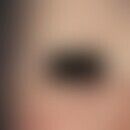Synonym(e)
Definition
HR (HR steht für HR Lysin Demethylase And Nuclear Receptor Corepressor) ist ein Protein kodierendes Gen, das auf Chromosom . 8p21.3 lokalisiert ist. Für dieses Gen wurden zwei Transkriptvarianten gefunden, die für unterschiedliche Isoformen kodieren.
Allgemeine Information
Das HR-Gen Gen kodiert das gleichnamige Protein, das eine wichtige Funktion beim Haarwachstum einnimmt. Das kodierte HR-Protein, eine Histondemethylase, demethyliert spezifisch sowohl mono- als auch dimethylierte 'Lys-9' des Histons H3. Diese Demethylase könnte als Transkriptionsregulator fungieren, der die Haarbiologie (über das Targeting von Kollagenen), die neurale Aktivität und den Zellzyklus kontrolliert. Die Translation dieses Proteins wird durch einen regulatorischen offenen Leserahmen (ORF) moduliert, der dem primären ORF vorgelagert ist. Mutationen in diesem stromaufwärts gelegenen ORF verursachen die hereditäre Marie-Unna-Hypotrichose, eine autosomal dominante Form des genetischen Haarausfalls.
Zu den Krankheiten, die mit HR assoziiert sind, gehören:
- Alopecia Universalis Congenita
- die autosomal rezessive kongenitale Alopezie und Atrichie mit papulösen Läsionen (Atrichia congenita mit Hornzysten)
LiteraturFür Zugriff auf PubMed Studien mit nur einem Klick empfehlen wir  Kopernio
Kopernio
 Kopernio
Kopernio- Ahmad W et al. (1998) A. M. A missense mutation in the zinc-finger domain of the human hairless gene underlies congenital atrichia in a family of Irish travellers. Am J Hum Genet 63: 984-991.
- Damste TJ et al. (1954) Atrichia with papular lesions: variant of congenital ectodermal dysplasia. Dermatologica 108: 114-122.
- Henn W et al. (2002) Atrichia with papular lesions resulting from compound heterozygous mutations in the hairless gene: a lesson for differential diagnosis of alopecia universalis. J Am Acad Derm 47: 519-523.
- Hillmer AM et al. (2001) Variant 1859G-A (arg620 to gln) of the 'hairless' gene: absence of association with papular atrichia or androgenetic alopecia. (Letter) Am J Hum Genet 69: 235-237.
- Kim H et al. (2007) Nonsense mutations in the hairless gene underlie APL in five families of Pakistani origin. J Derm Sci 48: 207-211.
- Loewenthal LJA et al. (1961) Atrichia with papular lesions. Dermatologica 122: 85-89.
- Miller J et al. (2001) Atrichia caused by mutations in the vitamin D receptor gene is a phenocopy of generalized atrichia caused by mutations in the hairless gene. J Invest Derm 117: 612-617.
- Paller AS et al. (2003) Compound heterozygous mutations in the hairless gene in atrichia with papular lesions. J Invest Derm 121: 430-432.
- Sprecher E et al. (1999) Identification of a genetic defect in the hairless gene in atrichia with papular lesions: evidence for phenotypic heterogeneity among inherited atrichias. Am J Hum Genet 64: 1323-1329.
- Sprecher E et al. (1998) Atrichia with papular lesions maps to 8p in the region containing the human hairless gene. Am J Med Genet 80: 546-550.
- Sprecher E et al. (2000) Androgenetic alopecia in heterozygous carriers of a mutation in the human hairless gene. J Am Acad Derm 42: 978-982.
- Zlotogorski A et al. 2002) Clinical and molecular diagnostic criteria of congenital atrichia with papular lesions. J Invest Derm 118: 887-890.



